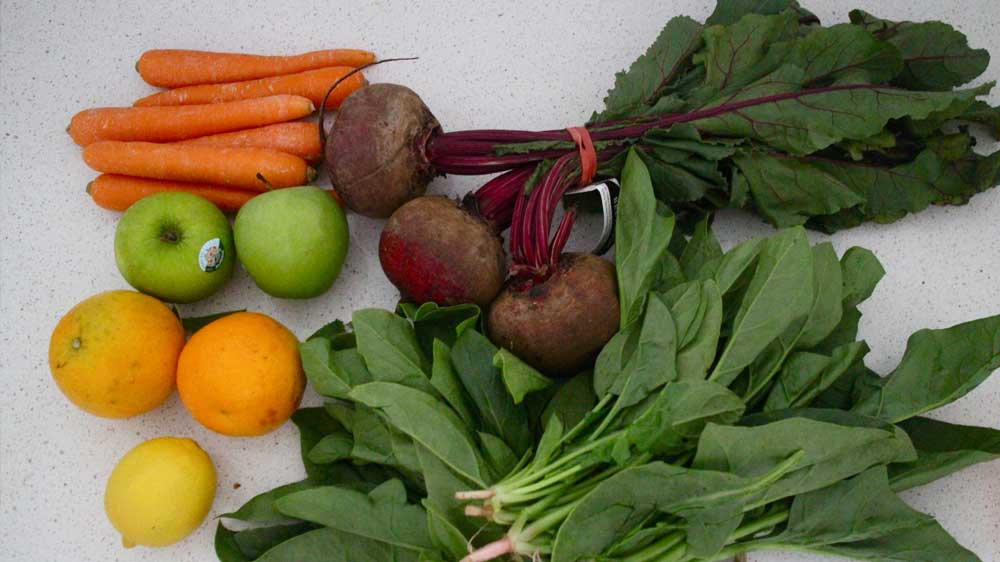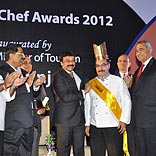
Unpasteurized, natural, packed with nutrients, enzymes and flavour, the Cold Press Juice is seen to grow market to 100 crore in the next 5 years. Basis similar facts its safe to say that the cold pressed juices would dominate the juice category over any concentrate juice in the next 3 to 5 years. Healthy, tasty and fresh, the cold pressed beverage market promises definitive opportunities of growth.
As this segment gives the investors and customers both a more fresh, reliable business to ride in, the segment is really picking high in cities like Delhi, Bengaluru, Mumbai, Kolkata and Pune. Delhi being the capital city hosts around 20 of such start-ups who are juicing the raw juice business in the city.
How ‘Juicy’ is the biz?
Like any other segment, Cold Pressed juice is a health and customer driven model. With people becoming more conscious about what they eat and from where it comes, the segment has boosted the growth of fresh juice segment in India.
Talking about the brands like Raw Pressery, Juice Up and Inspirit, they are already on a ride to fresh and a healthy India. Started in 2013 by former marketer Anuj Rakyan, Mumbai based Raw Pressery has soaked in around $6 million from investors like Sequoia Capital, Saama Capital Management Ltd and DSG Consumer Partners.
“Since its inception, Raw Pressery has grown from strength to strength. Registering revenues of Rs 3.5 crores in FY14-15, we plan to mature revenues up to Rs 7 crores in FY15-16 and 35 Crores in FY16-17,” said Rakyan.
Similarly, Noida based Juice Up which started late 2014 is serving around six variants of juices delivered to the households and corporate in Delhi-NCR.
“We are doing 16000 bottles in Delhi-NCR and are growing 20% month on month,” shared Riju Gupta, Director, Juice Up who is a serial entrepreneur.
Expansion is the key
With quick returns and better margins the segment is catching up in the fast growing Indian juice segment, and in years to come it may eat out the packaged juice market in India. Compared to the US and UK where the trend has become a part of the healthy life that they follows.
“Our distribution footprint will scale rapidly to 12 cities and cover modern trade, institutions, and HORECA and direct-to-home channels. The continuous involvement and support of our investors reinforces our vision to be India’s leading clean-label beverage brand in a rapidly growing global market,” shared Rakyan who started this business from being a mere concern to a necessity.
Juice Up which has opened its first kiosk at the Mall of India seeing the great potential the business offers. “At first we will open 5-6 kiosks, see the kind of model we can create, we can sell and can we get a brand recall, if it all works we will expand the model,” shared Gupta.
Unfolding new opportunities
Born out of the need in Kolkata, Inspirit started by Abhishek Jhunjhunwala is another Cold Pressed juice player that is creating awareness in the region.
“We are growing at 15-20 per cent month on month. We are getting good response and we are on a ride to create awareness to the masses,” shared Jhujhunwla who relies on word of mouth and digital marketing to grow the brand.
Cooking on the same lines, there are many other players like Zoe Cold Press, RawKing, My Greens, Antidote who are creating a healthy lifestyle. Not only this, fresh juice bars and cafes are another such segment which is becoming one of the disruptor in the fast accelerating juice market. Started in 2011, Joost Juice which holds the franchisee for Boost Juice in India is getting 800 enquiries for franchisees in a month on an average.
“We started franchising starting 2016, and this year itself sold 4 regions already in the first quarter, 16 stores in total. And yes, expansion is important, but our franchises have to be equally passionate people,” said Rivoli Sinha, Founder & MD, Joost Juice.
Growing at an annual pace of 11 per cent, beverages market today sits at $15 billion-a-year market in the country. According to a 2015 report by BCG and CII, beverages and fruit juices is one of the fastest growing categories within packaged consumer goods market. And, this opportunity may give new entrepreneurs to sail on healthy business ground.

I passed out in 1980 from Chandigarh. That time I wanted to become an engineer. Since I could not cater to that field, my brother prompted me to join the catering college.
So I joined Taj Group of Hotels and served there for 4 years. I never had love for cooking in the beginning; however as the journey progressed, I found the line very interesting. I was transferred to the Flight catering unit to start up their bakery project. Soon I switched my job from bakery to hot kitchen and, by 1989, I opened up two Taj cake shops – at Hyderabad and Chennai.
Meanwhile, I got an opportunity to train abroad and introduced stuffed centre-filled chocolate in the market. In 2007, I went to Bangalore to setup a new unit of flight catering. Then in 2010, I moved to Delhi to take care of their operations and that is when I joined ICF. The mission of ICF is to encourage young chefs to come forward. It was Chef Arvind Saraswat, Director, Food Production, who took me into that fold and he is the one I look upto.
Today the job of a chef is more inclined towards the management side of things, while cooking makes up just an integral part. I myself have 56 chefs working under me. All the chefs who work under me also contribute in menu design and this is another area which I am proud of. I have around 20 clients from various airlines; we plan the menu, showcase it and they select their menu. So if a chef is not a good manager, then it is very difficult to manage work, develop good chefs under him and make them responsible and accountable just like in other professions.
Cooking is also a profession and a great learning experience and I’m here to learn new things. So I clearly believe in the adage: Learn, Unlearn and Relearn. Even now I make it a point to stay abreast with the latest trends in food business through the net as well as by meeting new chefs because consumer’s tastes are always evolving and their perceptions are always changing.
My strength in administrative skills and my being proactive in managing new projects throughout my career helped me to bag the Golden Chef Award – a great accomplishment for me. When you enter this industry, the first year goes in knowing and learning people, while in the second year you start settling down and making friends. You make more friends than enemies if your stint in industry is for 3 or 4 years. If you stay more, arguments begin. So I consider myself lucky that I have made more friends than enemies in my entire career span.
Right now the air and catering business module is passing through a critical period because everyone is turning to low cost airline and this is the biggest threat to our business existence. To counter the risk, we are diversifying our menus and looking at various avenues of revenue generation where we can bring in synergies like Costa coffee, Starbucks, etc.
I know that as per NRAI, of the total restaurant industry, “70% is still unorganised; this has improved significantly because in 2010, 84% was unorganised”. All I can say is that the customer looks at quality and cost because everyone wants value for money. In my organisation, each and every meal, which is being sent out, is tasted by my team of chefs so that its quality is checked before it reaches the customer.
Though my family is not in this line (my wife is a good cook and also my inspiration), I do have plans to open my restaurant in future. Out of all the cuisines I cook, my favourite cuisine is Indian cuisine (Awadhi cuisine from the city of Lucknow) which basically consists of dry fruits and saffron.

Due to the favourable consumer dynamics, the Indian food services market has been on an exponential growth trajectory for the past few years. The following are the opportunities in the B2C or the front-end segment:
· Home-grown concepts - QSR and Casual Dine: The change in eating habits of Indian consumers has encouraged Indian entrepreneurs to foray into food services business. Most of these players are concentrated in specific regions and have posted consistent, high growth having a strong business model. However, geographical limitations have ensured the persistence of a gap in terms of creating the right brand pull which is reflected by the total footfalls at these outlets. Scaling operations will allow players a wide exposure to larger markets, and help them attain economies of scale. The segment stands to gain significant traction and is lucrative area for PE/VC funds.
· Online food portals: The exponential surge in the number of Internet users, in tandem with this population’s growing need for convenience (35% consumers order food 3-4 times a month) has fostered the development of online food service portals. Currently, such portals primarily provide restaurant listings and reviews, and also enable restaurant reservations and placement of food orders. Some portals providing these services include Zomato, Justeat.in, Burrp, etc.
The review and listing portals require limited investment but give high returns. Concurrent to this is the possibility for players to get into consumer analytics by making the optimum use of available restaurant data. Mobile applications can also be developed to facilitate consume ease.
· Hybrid model - Food services and Food Merchandise: A model with a combination of food services and food merchandise retailing, promises increased footfalls and sales at outlets. The sale of food-related merchandise offers an additional revenue generating opportunity with minimal additional investment.
Presently at a nascent stage in India, the model is expected to gain a strong market foothold in the years to come. Some pioneers to adopt the model include Cafe Coffee Day that retails coffee beans and cookies and Nirula’s offering a variety of syrups and sauces.
· Space Sharing: In India, it is vital to rationalize the costs for an outlet given the high rentals. The adoption of a space-sharing model, i.e. two brands sharing the same space can help in optimising operating costs, which have a strong bearing on outlet profitability. Additionally, this can also help attract higher footfalls via catering to the needs of a wider set of consumers. It is a model prevalent in the US and has begun finding acceptance in India, e.g. Subway and Yogen Fruz sharing spaces in Kolkata, and Pizza Corner with Creme n Fudge in Bangalore and Hyderabad.
Front-end Investments- Indian Food Services Market
| Year Invested | Investor | Company | Brands Owned | Deal Amount (USD mn) |
| Casual Dine | ||||
| 2012 | Helion Venture Partners & Footprint Ventures | Spring Leaf Retail Private Limited | Mast Kalandar | 6.5 |
| QSR | ||||
| 2012 | New Silk Route | Vasudev Adiga’s Fast Food Ltd | Adigas | 38 |
| 2012 | SAIF Partners | TMA Hospitality Services | Ammi’s Biryani | 7 |
| 2011 | Indian Equity Partners | Sagar Ratna | Sagar Ratna | 35 |
| 2010 | KKR | Coffee Day Holdings | Cafe Coffee Day | 75 |
| 2012 | Indian Angel Network | Poncho | Poncho | N/A |
| Fine Dine | ||||
| 2011 | Everstone Capital | JS Hospitality Services | Pind Balluchi | 20 |
| Combined Segments | ||||
| 2012 | Premji Invest | JSM Corp | Hard Rock Cafe, California Pizza Kitchen, Shiro Lounge | 25 |
(Source: India Food Services Report, 2013, NRAI)
Copyright © 2009 - 2025 Restaurant India.











